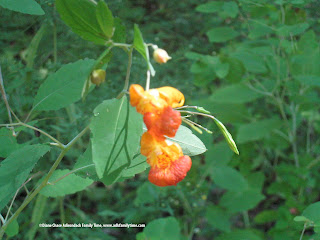Easy Short Lake Placid Hikes and Adirondack Museums: The ADK Loj's Heart Lake Nature Museum

By Diane Chase Only in the Adirondacks can a person go for a walk and come across a museum. The Adirondack Mountain Club’s (ADK) Heart Lake Nature Museum seems more nature center than museum but what’s in a name. As in the Gershwin song, “You say either and I say eyether; you say neither and I say nyther.”* It’s not the name that matters but what is inside that counts. I double-check the meaning of museum and it is simply a building where objects of artistic, historical or scientific importance are kept and studied. My child’s collection of rocks, old bottles and action figures only partially meets the criteria. For all I know major scientific discoveries could be found in his room as well but would I want them on display? We are not ready to open up to the public and I’m not sure what the interest level would be anyway. On the other hand, the Heart Lake Nature Museum’s one room schoolhouse appeal gets children and adults alike to examine the natural world. The “Cranium Case” sho














